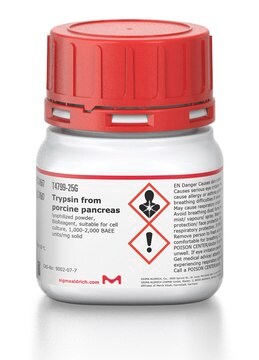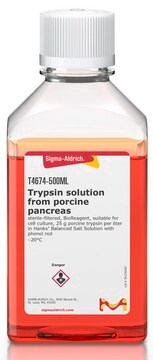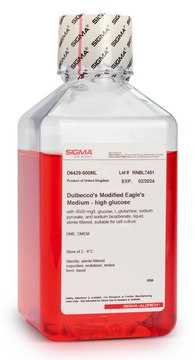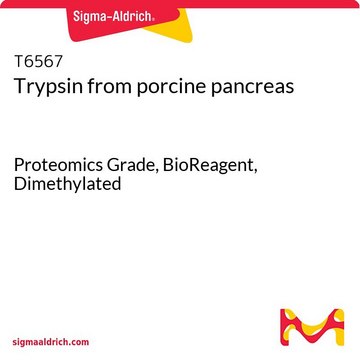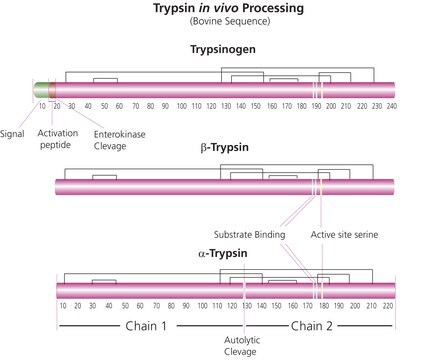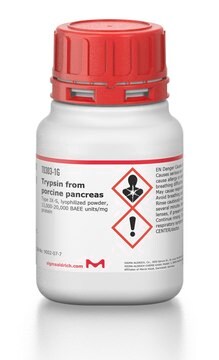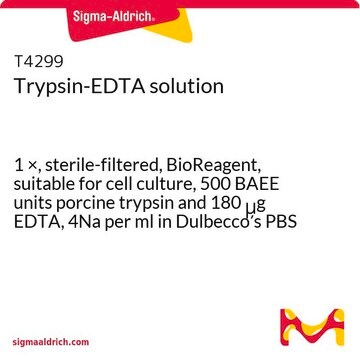Kluczowe dokumenty
T4549
Trypsin solution from porcine pancreas
sterile-filtered, BioReagent, suitable for cell culture, 25 g porcine trypsin per liter in 0.9% sodium chloride
About This Item
Polecane produkty
pochodzenie biologiczne
Porcine
Poziom jakości
sterylność
sterile-filtered
linia produktu
BioReagent
Formularz
solution
masa cząsteczkowa
23.4 kDa
metody
cell culture | mammalian: suitable
pH
7.6
Warunki transportu
dry ice
temp. przechowywania
−20°C
Szukasz podobnych produktów? Odwiedź Przewodnik dotyczący porównywania produktów
Zastosowanie
Działania biochem./fizjol.
Serine protease inhibitors, including DFP, TLCK, APMSF, AEBSEF, and aprotinin, amongst others, will inhibit Trypsin.
Przestroga
Definicja jednostki
Uwaga dotycząca przygotowania
Hasło ostrzegawcze
Danger
Zwroty wskazujące rodzaj zagrożenia
Zwroty wskazujące środki ostrożności
Klasyfikacja zagrożeń
Eye Irrit. 2 - Resp. Sens. 1 - Skin Irrit. 2 - STOT SE 3
Organy docelowe
Respiratory system
Kod klasy składowania
10 - Combustible liquids
Klasa zagrożenia wodnego (WGK)
WGK 1
Temperatura zapłonu (°F)
Not applicable
Temperatura zapłonu (°C)
Not applicable
Wybierz jedną z najnowszych wersji:
Masz już ten produkt?
Dokumenty związane z niedawno zakupionymi produktami zostały zamieszczone w Bibliotece dokumentów.
Klienci oglądali również te produkty
Protokoły
Trypsin is frequently used in cell dissociation from adherent surfaces. We offer a wide variety of trypsin solutions to meet your specific cell line requirements, as well as protocols, troubleshooting ideas, and more.
Trypsyna jest powszechnie stosowana do oddzielania przylegających komórek od powierzchni. Dostępna jest szeroka gama roztworów trypsyny, aby spełnić specyficzne wymagania linii komórkowej.
Nasz zespół naukowców ma doświadczenie we wszystkich obszarach badań, w tym w naukach przyrodniczych, materiałoznawstwie, syntezie chemicznej, chromatografii, analityce i wielu innych dziedzinach.
Skontaktuj się z zespołem ds. pomocy technicznej